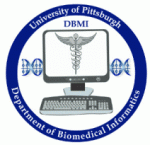ISCB COVID-19 Paper Collections
Here you will find links to collections dedicated to COVID-19 and Sars-Cov-2 from major publishers and scientific societies.
Publishers
Cambridge University Press
https://www.cambridge.org/de/academic/covid-19-resources-and-information
Elsevier
https://www.elsevier.com/connect/coronavirus-information-center
Frontiers
https://coronavirus.frontiersin.org/
Hindawi
https://www.hindawi.com/covid-19-collection/
JAMA
https://jamanetwork.com/journals/jama/pages/coronavirus-alert
Lancet
https://www.thelancet.com/coronavirus
New England Journal of Medicine
https://www.nejm.org/coronavirus
Oxford University Press
https://global.oup.com/about/covid19?cc=de
PNAS
https://www.pnas.org/page/coronavirus
Public Library of Science
https://plos.org/covid-19/
Science AAAS
https://www.sciencemag.org/tags/coronavirus
SpringerNature
https://www.springernature.com/gp/researchers/campaigns/coronavirus
Wiley
https://novel-coronavirus.onlinelibrary.wiley.com/
Scientific Societies
American Chemical Society
https://www.acs.org/content/acs/en/covid-19.html
American Medical Association
https://jamanetwork.com/journals/jama/pages/coronavirus-alert
American Medical Informatics Association
https://www.amia.org/COVID19
American Society for the Advancement of Science
https://www.sciencemag.org/tags/coronavirus
American Society of Human Genetics
https://www.ashg.org/ashg-information-for-the-community-covid-19/
Royal Society, London
https://royalsociety.org/news/2020/03/coronavirus-covid-19/
World Health Organization
https://www.who.int/emergencies/diseases/novel-coronavirus-2019/global-research-on-novel-coronavirus-2019-ncov
ISCB COVID-19 Section
The COVID-19 pandemic is both severely affecting our lives and impacting our science. ISCB responds to the respective challenges by offering its expertise to the scientific community and empowering scientific networking. The ISCB COVID-19 Section offers four lines of this initiative:
- ISCB COVID-19 Statements. Here you find statements on the ongoing pandemic that have been issued by ISCB.
- ISCB COVID-19 Webinar collection. Here you find webinars specific to the topics of COVID-19 and Sars Cov-2 that are organized by ISCB.
- ISCB COVID-19 Science collection. Here you find materials specific to the topics of COVID-19 and Sars Cov-2 that have been submitted by ISCB members. This collection has three subsections for (i) scientific articles, (ii) scientific data sets and, (iii) proposals of community science projects.
- ISCB Tutorial collection. Here you find tutorials that present basic or advanced computational biology content for biologists and computational biologists in these times of increased digital education activity. The tutorials have been (i) presented at recent ISCB conferences and (ii) suggested by ISCB members.
Call for submissions
If you are a member of ISCB we encourage you to submit entries to the Science collection and Tutorial collection. Your submission entails a pointer to the science content, a short description of background or purpose (two lines) and lists your name as submitter. Submission will be subjected to a basic check of scope and purpose.
You find the relevant submission forms here.
ISCB COVID-19 Webinar Collection
The ISCB COVID-19 webinar collection points to webinars on ongoing research on COVID-19 and Sars-Cov2. The webianrs are split into two lists
ISCBacademy Covid-19 Webinars
A SARS-CoV-2 protein interaction map reveals targets for drug repurposing
By Nevan Krogan
May 19, 2020
Efforts to develop antiviral drugs versus COVID-19 or vaccines for its prevention have been hampered by limited knowledge of the molecular details of SARS-CoV-2 infection. This webinar will describe our efforts to address this challenge by expressing 26 of the 29 SARS-CoV-2 proteins in human cells and identifying the human proteins physically associated with each using affinity-purification mass spectrometry. Among 332 high-confidence SARS-CoV-2-human protein-protein interactions, we identified 66 druggable human proteins or host factors targeted by 69 compounds (29 FDA-approved drugs, 12 drugs in clinical trials, and 28 preclinical compounds). Within a subset of these, multiple viral assays identified two sets of pharmacological agents that displayed antiviral activity.
At Home with Covid-19
By Brian Shoichet
June 26, 2020
The urgency of the coronavirus pandemic has motivated investigators world wide to seek approved drugs or investigation new drugs as a way to rapidly advance therapeutics into clinical trials to treat the disease. I will describe a large collaboration, hosted by the UCSF Quantitative Biology Institute, to do that in a mechanistically focused way. Using AP-MS, a host-pathogen network of viral and human proteins was created, and drugs were sought targeting the human partner. From among 322 high confidence human proteins associated with 26 viral proteins emerged 63 that were druggable. Against those, 69 drugs were tested for efficacy, and from these 10 drugs in two broad classes emerged: those targeting protein biogenesis, and those acting against the Sigma1 and Sigma2 receptors. The activities of these drugs, and the chemoinformatics infrastructure that supported their selection, will be discussed. The mechanism-based repurposing strategy will be compared to a complementary effort that targets viral proteins and seeks novel chemical matter, using structure-based ultra-large library docking.
Global surveillance of COVID-19 by mining news media using a multi-source dynamic embedded topic model
By Yue Li and David Buckeridge
June 30, 2020
As the COVID-19 pandemic continues to unfold, understanding the global impact of non-pharmacological interventions (NPI) is important for formulating effective intervention strategies, particularly as many countries prepare for future waves. We used a machine learning approach to distill latent topics related to NPI from large-scale international news media. We hypothesize that these topics are informative about the timing and nature of implemented NPI, dependent on the source of the information (e.g., local news versus official government announcements) and the target countries. Given a set of latent topics associated with NPI (e.g., self-quarantine, social distancing, online education, etc), we assume that countries and media sources have different prior distributions over these topics, which are sampled to generate the news articles. To model the source-specific topic priors, we developed a semi-supervised, multi-source, dynamic, embedded topic model. Our model is able to simultaneously infer latent topics and learn a linear classifier to predict NPI labels using the topic mixtures as input for each news article. To learn these models, we developed an efficient end-to-end amortized variational inference algorithm. We applied our models to news data collected and labelled by the World Health Organization (WHO) and the Global Public Health Intelligence Network (GPHIN). Through comprehensive experiments, we observed superior topic quality and intervention prediction accuracy, compared to the baseline embedded topic models, which ignore information on media source and intervention labels. The inferred latent topics reveal distinct policies and media framing in different countries and media sources, and also characterize reaction COVID-19 and NPI in a semantically meaningful manner.
Evolutionary origins of SARS-CoV-2 and tracking its spread using phylodynamic data integration
By Philippe Lemey
October 2, 2020 at 11:00AM EDT!
There are outstanding evolutionary questions on the recent emergence of human coronavirus SARS-CoV-2 including the role of reservoir species, the role of recombination, and its time of divergence from animal viruses. I will describe a collaborative effort to reconstruct the origins of the virus. Our findings indicate that sarbecoviruses – the viral subgenus containing SARS-CoV and SARS-CoV-2 – undergo frequent recombination and exhibit spatially structured genetic diversity on a regional scale in China. Contrary to other analyses, we find that SARS-CoV-2 itself is not a recombinant of any sarbecoviruses detected to date, and its receptor binding motif, important for specificity to human ACE2 receptors, appears to be an ancestral trait shared with bat viruses, not one acquired recently via recombination. Divergence dates between SARS-CoV-2 and the bat sarbecovirus reservoir indicates that the lineage giving rise to SARS-CoV-2 has been circulating unnoticed in bats for decades.
Following the emergence of the virus, unprecedented sequencing efforts have resulted in the accumulation of over 100,000 genome sequences sampled globally. Despite this rich source of information, evolutionary reconstructions are hindered by the slow accumulation of sequence divergence over its relatively short transmission history and the spatiotemporal bias in genome sequence sampling. I will describe a data phylodynamic data integration approach in a Bayesian framework to tries to address these issues in order to assist molecular epidemiological analyses.
ISMB 2020 COVID-19 Related Presentations
Links within this section: COVID-19 Session | Other ISMB tracks
COVID-19 Session
|
|
| Title | Presenter |
| Tools, Workflows and Infrastructure for Open and Reproducible Analysis of SARS-CoV-2 Data | Björn Grüning |
| Transcriptomics-based drug repositioning pipeline identifies therapeutic candidates for COVID-19 | Brian Le |
| Viruses, Visualization, and Validation: Interactive mining of COVID-19 literature | Varun Mittal |
| CoV-AbDab: the Coronavirus Antibody Database | Matthew Raybould |
| Differentially conserved amino acid positions reflect differences in SARS-CoV-2 and SARS-CoV behaviour | Jake McGreig |
| Characterization of SARS-CoV-2 viral diversity within and across hosts | Palash Sashittal |
| Real-time tracking of SARS-CoV-2 spread and evolution | Richard Neher |
ISCB COVID-19 Tutorial Collection
Below is a list of tutorials on general computational biology issues for use by computational biologists and bench scienists in this time of added digital education activities. The are two lists;
- A list of tutorials presented at recent ISMB meetings
- A list of tutorials submitted by ISCB members.
Tutorials and Special Sessions Presented at Recent ISMB Meetings
Tutorials Submitted by ISCB Members
To submit a tutorial to be added to the collection use the submission form.
| Tutorial Title | Suggested By |
| Description and Reason for Suggesting | |
| Bioinformatics for Benched Biologists | Lior Pachter |
| This workshop demonstrates an analysis of a single-cell RNA-seq dataset starting from the reads. It was designed for an online 1-2 hour Zoom workshop and uses a python notebook that runs in about 30 minutes on Google Colab. | |
| Bioinformatics for Benched Biologists II (R Edition) | Lior Pachter |
| This workshop demonstrates an analysis of a single-cell RNA-seq dataset starting from the reads. It was designed for an online 1-2 hour Zoom workshop and uses an R notebook that runs on Google Colab. | |
| GPU-Accelerated Single-Cell Analysis with RAPIDS | Avantika Lal |
| This tutorial demonstrates how to accelerate single-cell RNA-seq analysis using GPUs (Graphics Processing Units). RAPIDS, a free and open-source software suite for GPU-accelerated data science, is used to perform preprocessing, clustering, visualization and differential expression analysis of single cells, 5-100x faster than on CPUs. A demonstration is provided in the form of a Jupyter notebook. Single-cell RNA-seq is essential for Covid-19 research, e.g. identifying susceptible cells. Analysis requires speed and interactivity but tools are slow. This GPU pipeline performs scRNA-seq analysis 4-90 times faster than standard tools. |
|
| A Practical Introduction to Reproducible Computational Workflows | Peter W. Rose |
| This hands-on tutorial teaches participants the key requirements and practical skills to setup a reproducible and reusable computational research environment. The tutorial is intended for Python users and anyone interested in using Jupyter Notebooks. We also cover collaborative development practices. After working through this tutorial, participants should be able to set up their own projects by applying the principles and techniques learned and publish reproducible research protocols. Computational notebooks offer new opportunities to communicate computational analyses. This tutorial presents step-by-step instructions following our: "Ten simple rules for writing and sharing computational analyses in Jupyter Notebooks" paper. |
|
ISCB COVID-19 Collection Submission Forms
ISCB COVID-19 Science Collection
- To submit a scientific article to the ISCB COVID-19 science collection use this form.
- To submit a scientific data set to the ISCB COVID-19 science collection use this form.
- To propose a community science project to the ISCB COVID-19 science collection use this form or submit a proposal to This email address is being protected from spambots. You need JavaScript enabled to view it.
ISCB COVID-19 Tutorial Collection
- To submit a tutorial to the ISCB COVID-19 tutorial collection use this form.






